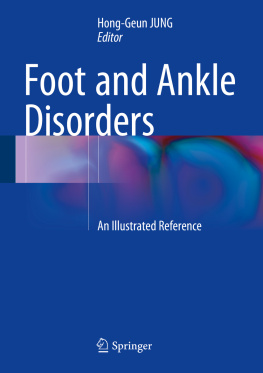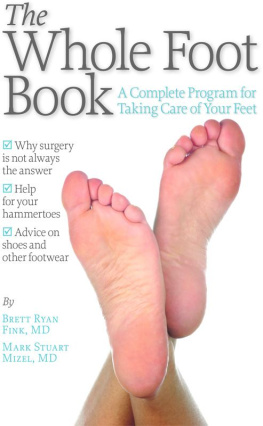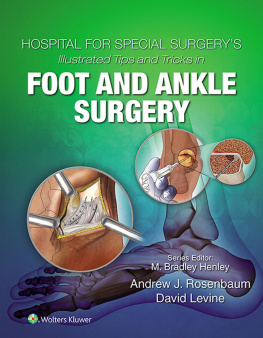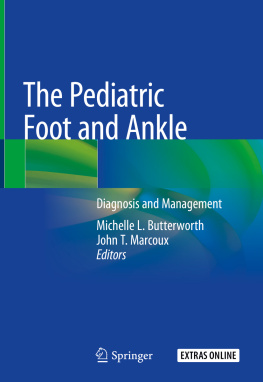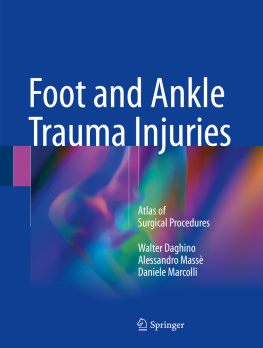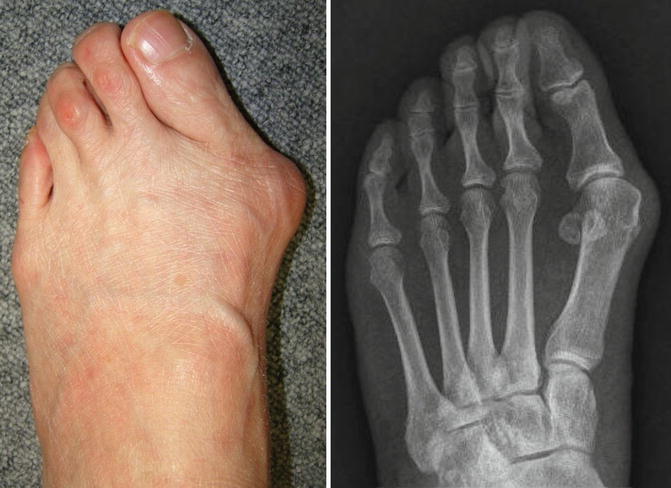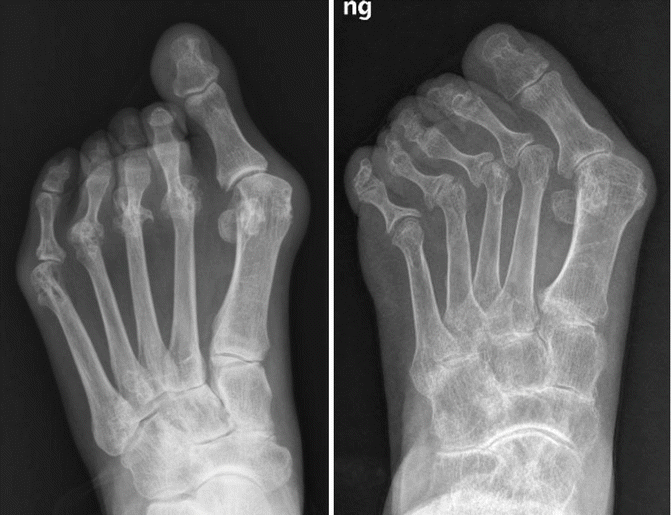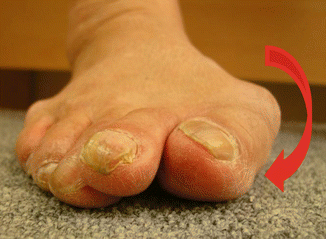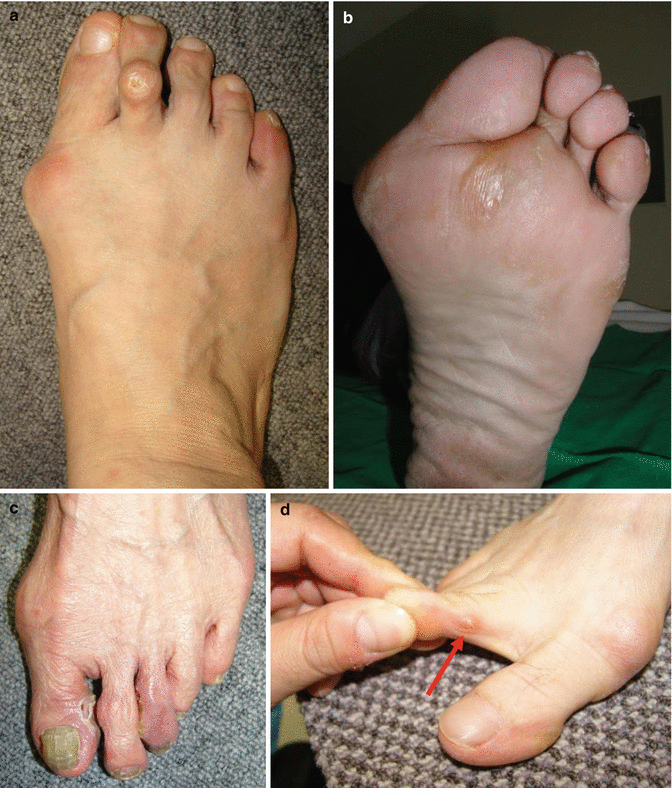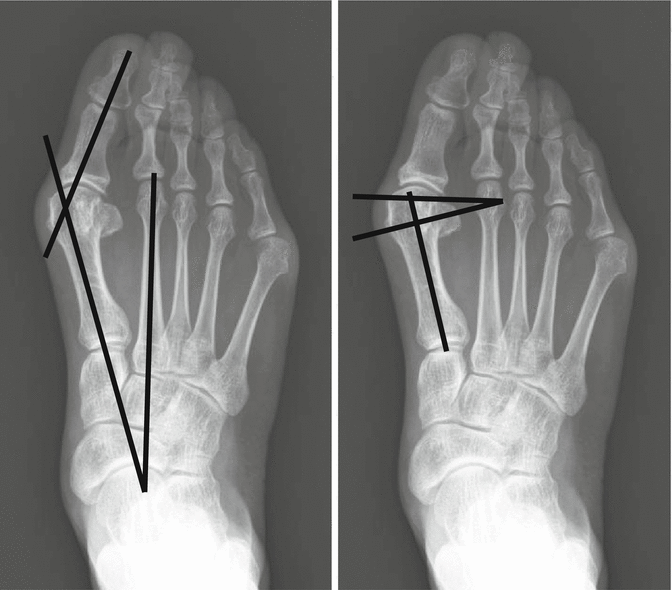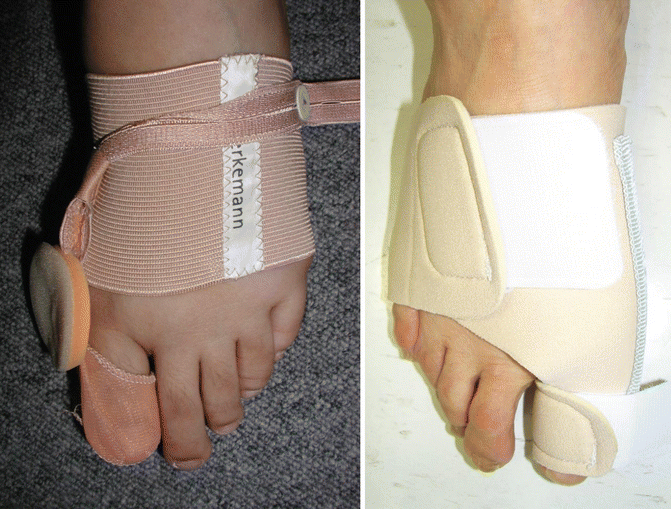Springer-Verlag Berlin Heidelberg 2016
Hong-Geun JUNG (ed.) Foot and Ankle Disorders 10.1007/978-3-642-54493-4_1
1. Hallux Valgus and Bunionette
Hong-Geun Jung 1
(1)
Department of Orthopedic Surgery, Konkuk University School of Medicine, Seoul, Korea
(2)
Department of Orthopedic Surgery, Konkuk University Medical Center, Seoul, Korea
Hong-Geun Jung (Corresponding author)
Email:
Keywords
Hallux valgus Bunionette Hallux valgus angle Inter-metatarsal angle Distal chevron metatarsal osteotomy Proximal Chevron metatarsal osteotomy Scarf osteotomy Lapidus procedure
Introduction
The term hallux valgus was introduced by Carl Hueter in 1971 [].
Fig. 1.1
Hallux valgus characterized by lateral deviation of the great toe and medial deviation of the first metatarsal
Hallux valgus is known to be associated with footwear, but the deformity is not only caused by narrow pointed high-heel footwear [).
Fig. 1.2
Two variant patterns of hallux valgus deformity of rheumatoid arthritis patients
Hallux valgus is not simple but complex deformity. The hallux valgus is usually accompanied with varus of first metatarsal, valgus and pronation of hallux, and plantar callosity of second metatarsal and often accompanied with lesser toe deformity such as claw toe deformity and Mortons interdigital neuroma [).
Fig. 1.3
The hallux pronation deformity in the moderate hallux valgus
Diagnosis
Clinical Manifestations
Evaluation of hallux valgus has to be begun with careful history taking including onset of the symptoms, family history, and patients activity and age. Physical examination should be performed to evaluate for multiple factors associated with hallux valgus. The alignment of foot in standing and sitting position including magnitude of hallux deformity and hallux pronation, adequacy of the longitudinal arch, and hindfoot position have to be evaluated and also range of motion of the first MTP joint and hypermobility of the first TMT joint have to be checked.
Clinical symptoms of hallux valgus are variable other than typical bunion pain and complained various atypical symptoms such as isolated intractable keratosis under the second metatarsal and kissing corn on medial aspect of the 2nd toe impinging on the hallux valgus. Overriding the 2nd toe due to severely hallux valgus with dorsal corn at PIP joint level can happen (Fig. ). Callosity at multiple sites such as hallux plantar interphalangeal joint, under the 1st and 5th metatarsal heads, can also occur.
Fig. 1.4
( a ) Dorsal corn at PIP joint of 2nd toe, ( b ) IPK at 2nd metatarsal, ( c , d ) kissing corn on medial aspect of 2nd toe. Red arrow indicates the painful corn formed on 2nd toe at the PIP joint level
Radiologic Diagnosis
The weight-bearing foot AP and lateral plain radiograph is needed for evaluating hallux valgus deformity and additionally sesamoid view is required. The radiograph must be taken on weight-bearing state because the radiograph parameter is different from non-weight bearing. Hallux valgus radiographic parameters such as hallux valgus angle (HVA), first-second inter-metatarsal angle (IMA), and distal metatarsal articular angle (DMAA) are measured (Fig. ).
Fig. 1.5
Hallux valgus angle (HVA), first-second intermetatarsal angle (IMA), and distal metatarsal articular angle (DMAA)
In addition to what has been mentioned above, 1st MTP joint congruency and 1st medial cuneiform-metatarsal (MTC) joint hypermobility must be assessed for evaluating hallux valgus deformity. Hallux valgus with incongruent 1st MTP joint is corrected with distal soft tissue procedure (DSTP), i.e., lateral soft tissue release. Hallux valgus with presence of marked hypermobility of first medial cuneiform-metatarsal joint often cannot be sufficiently corrected by metatarsal osteotomy procedures and realignment arthrodesis of first medial cuneiform-metatarsal joint, i.e., modified Lapidus procedure is often necessary.
Treatments
Conservative Treatment
The purpose of conservative treatment in most patients with bunion deformity is to relieve symptoms [).
Fig. 1.6
Night brace for hallux valgus
Indications of conservative care are patients with ligamentous laxity, hyperelasticity, or neuromuscular disorders and who do not want surgery. Clinicians should recommend roomy footwear to reduce bunion pain and soft sole to reduce metatarsalgias for patients. In short, low heel, adequate toe box, and soft upper conditions relieve symptoms. Orthotic devices may provide discomfort to patients because of volume in shoe and skin irritation. Moreover, it has not been proved to prevent progression of the deformity or correct the hallux valgus deformity [].
Surgical Treatment
If conservative management fails, surgical treatment should be considered. Surgeon should set a high value on pain and discomfort rather than cosmesis, although this is not uncommon complaint of patients. Indication for surgery is when patient has enough forefoot pain and discomfort for performing daily activities even with wearing comfort shoe wear that she/he can wear. Therefore surgical indication varies according to each patients daily life style, and surgery is not recommended for the patients without pain and for only cosmetic purposes, because it may often lead to patient dissatisfaction due to unexpected postoperative ill- defined pain. Hallux valgus surgery is also not recommended for athletes or physically hyperactive male adults, because surgery often leads to mild decrease of 1st MTP range of motion which may impede or discourage preoperative competitive sports activities. Therefore this should be warned clearly before the surgery. Also while performing the surgery, it should be emphasized that hallux valgus as well as the hallux pronation should be corrected at exact extent.
Hallux valgus is graded mild, moderate, and severe by hallux valgus angle (HVA) and intermetatarsal angle (IMA) and the surgical option is chosen according to severity grading (Table ).
Table 1.1
Essential radiologic parameters of hallux valgus and their normal range
Essential radiologic parameters | Normal range | Severity grading |
|---|

